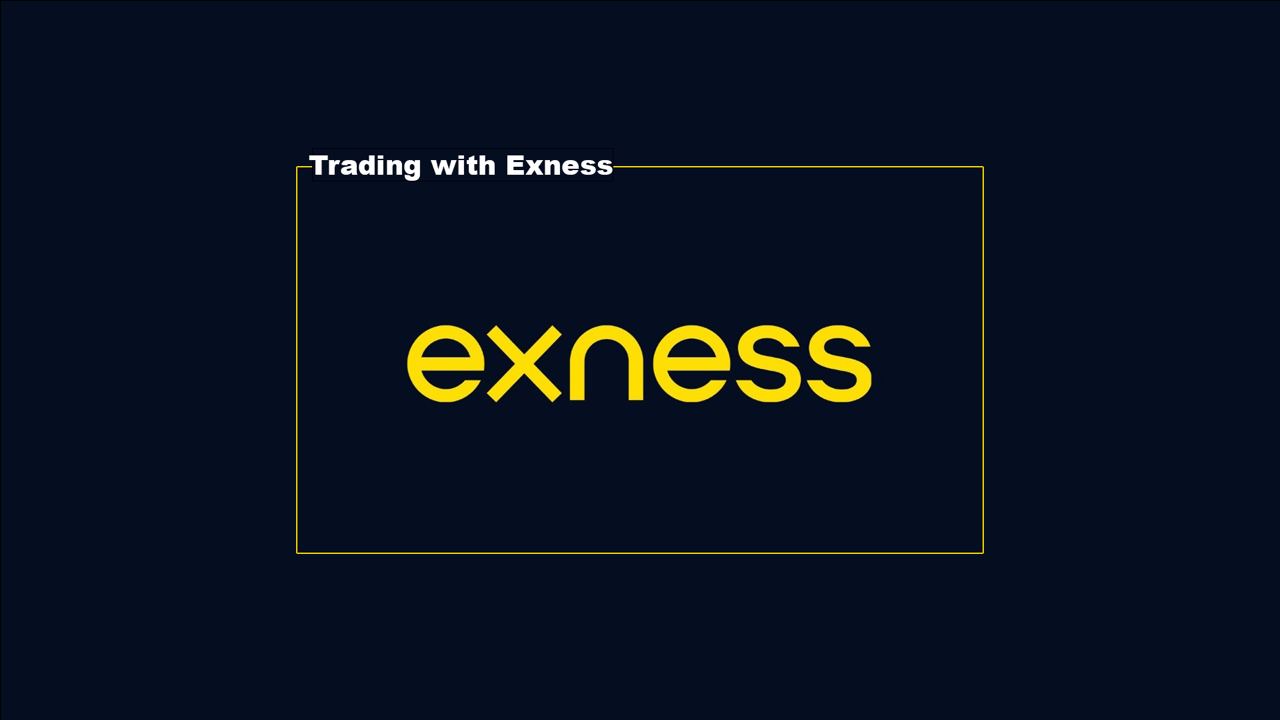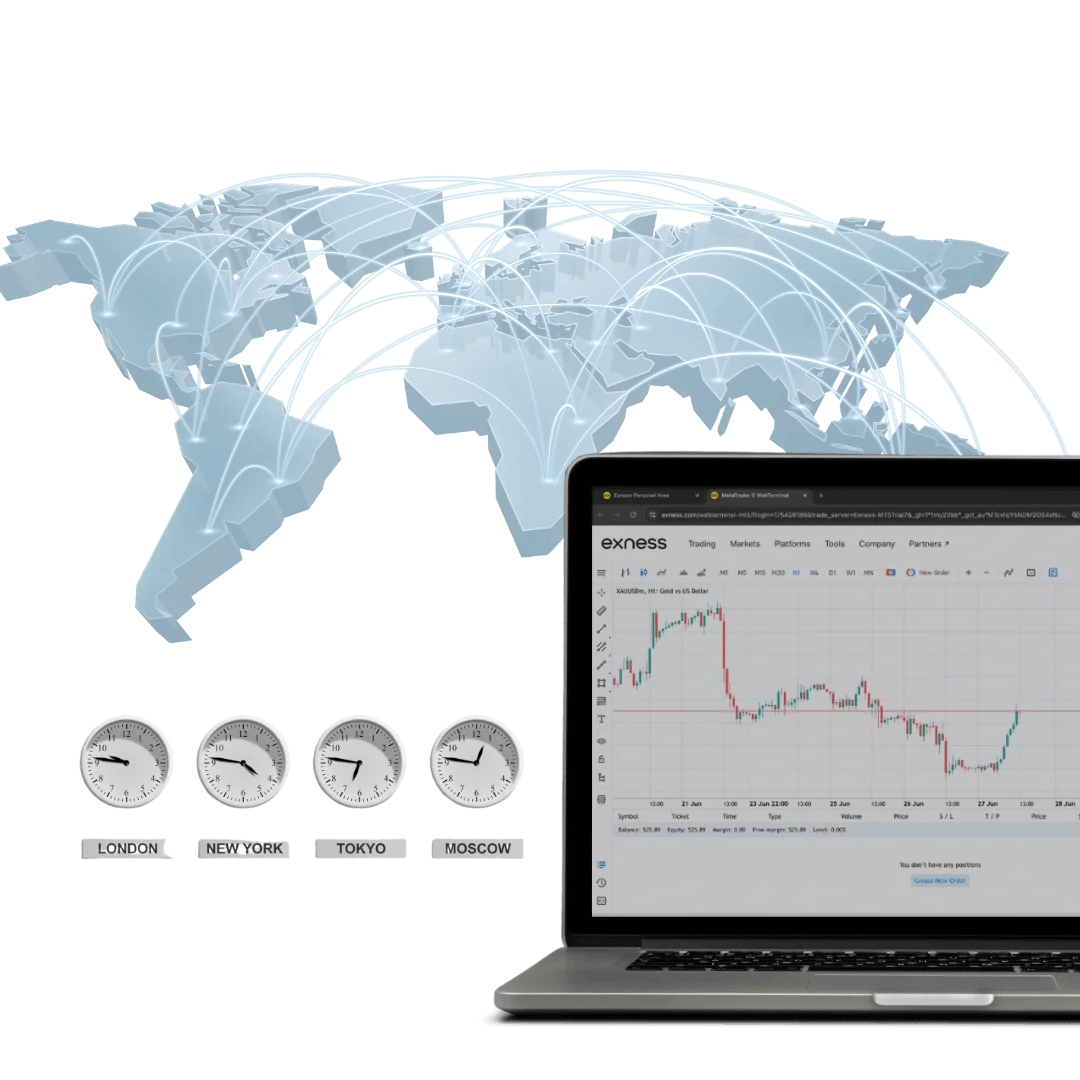
8 minute read
How to Adjust UTC Time in Exness?
Time management is a critical element of successful trading. On Exness platforms, the default time settings use UTC (Coordinated Universal Time), ensuring consistency across global markets. Adjusting your trading habits to align with UTC time is vital for accurate chart analysis, trading during peak market hours, and keeping track of economic events. Although Exness does not allow users to customize the platform’s UTC time directly, understanding how it works and adapting to it can greatly enhance your trading precision.

🏆 Start Trading With Exness – Register Now! 🚀 or Visit the Broker’s Website ⭐
Understanding UTC Time in Exness
UTC time serves as the global standard for tracking time, and Exness adopts this system across its platforms for clarity and consistency. Financial markets operate across multiple time zones, and using UTC eliminates confusion caused by regional differences. On platforms like MetaTrader 4 and MetaTrader 5, timestamps for market movements, trade execution, and historical data are all recorded in UTC. This makes it easier to compare data and execute trades regardless of where you are in the world.
By relying on UTC, Exness ensures that traders can synchronize their strategies with global market activities, especially during key trading sessions like London or New York. For traders, understanding this system is essential to avoid missing critical opportunities or misinterpreting chart patterns.
Why Adjusting UTC Time in Exness is Important
Being in sync with market timings is crucial for accurate trading. Every major market, from forex to commodities, operates within specific hours, and these schedules are often referenced in UTC. If your local time differs significantly from UTC, understanding and adjusting to the difference becomes a necessary step to stay aligned with market activities.
Moreover, economic news events are often announced in UTC. These events can trigger significant market movements, and failing to account for the time difference may result in missed opportunities. Similarly, charts on Exness platforms are designed to reflect market activity based on UTC timestamps, ensuring uniformity for all traders. Understanding how UTC aligns with your local time ensures that you can plan trades effectively and avoid timing errors.
Steps to Adjust UTC Time on Exness Platforms
Exness platforms are configured to follow UTC time, and while you cannot directly change this setting, there are practical ways to adapt. Knowing your local time's offset from UTC is the first step. For example, if you live in a region five hours behind UTC, you must mentally account for this difference when interpreting chart data or planning trades.
Additionally, many tools and resources are available to help manage time differences. Keeping your devices set to the correct local time and using time zone converters can help bridge the gap. This ensures that you remain aligned with Exness’s platform timing while operating within your local time zone.
How UTC Time Affects Trading on Exness
UTC time impacts nearly every aspect of trading on Exness. Market openings, closings, and peak activity periods are all tied to UTC. If you trade during the most active hours, such as the overlap between London and New York sessions, you must calculate how these UTC times translate into your local time.
Chart analysis is another area where UTC plays a pivotal role. All Exness charts are timestamped in UTC, which is particularly important for identifying key trends, breakout points, and market patterns. Without correctly aligning these timestamps with your local time, your analysis could be misaligned, potentially leading to incorrect decisions.
Understanding and adjusting to UTC time is not just a technical necessity but a strategic advantage for traders who aim to operate seamlessly across global markets. This synchronization ensures you stay in step with market dynamics and trade with confidence.

🏆 Start Trading With Exness – Register Now! 🚀 or Visit the Broker’s Website ⭐
Common Issues and Solutions When Adjusting UTC Time in Exness
1. Difficulty Converting UTC to Local Time
Problem: Many traders, especially those new to the platform or located in time zones with unusual offsets, find it challenging to calculate the difference between UTC and their local time. This can lead to errors in planning trades and interpreting market schedules.
Solution: Use reliable online tools like time zone converters or apps that display both UTC and local time. Setting a clock or widget on your device to UTC can also help you visualize the difference easily and ensure you stay in sync with market timings.
2. Daylight Saving Time Confusion
Problem: In regions that observe daylight saving time, the local clock shifts seasonally, while UTC remains constant. This can disrupt trading schedules and cause traders to misalign with market hours.
Solution: Stay aware of daylight saving time changes in your region and calculate the new offset with UTC. Adjust your trading schedule accordingly, and consider using an automated calendar that accounts for these shifts.
3. Missed Market Sessions
Problem: Traders may miss important market openings or closings due to confusion about how UTC aligns with local trading times. This is especially problematic during high-volatility sessions, such as the overlap of London and New York markets.
Solution: Create a trading schedule that lists the opening and closing times of major markets in both UTC and your local time. Set reminders or alarms for key sessions to ensure you never miss critical trading windows.
4. Errors in Chart Analysis
Problem: Timestamps on Exness charts are displayed in UTC. Misinterpreting these timestamps can lead to errors in identifying trends, breakout points, or other critical patterns.
Solution: Train yourself to read and interpret UTC-based timestamps accurately. If necessary, manually adjust chart timings to align with your local time during your analysis, or keep a side-by-side reference for better understanding.
5. Economic News Timing
Problem: Economic events and news releases are often announced in UTC. Without proper synchronization, traders may miss these events or fail to prepare for the market volatility they trigger.
Solution: Follow an economic calendar that displays event times in both UTC and your local time. Platforms like the Exness Economic Calendar can help you track upcoming announcements and plan your trading strategy in advance.
By addressing these common problems with practical solutions, you can enhance your trading accuracy and align your activities seamlessly with global market schedules.
Tips for Managing Time Settings Effectively on Exness
Managing time settings effectively is crucial to maintaining accuracy and precision in your trading activities. The first step is to become familiar with your local time zone’s offset from UTC. By knowing how many hours ahead or behind UTC your location is, you can quickly adjust your schedule to align with the Exness platform.
To simplify the process, consider using a reliable world clock or time zone conversion tool. Many apps and online platforms allow you to display both your local time and UTC simultaneously, making it easier to coordinate with Exness charts and market schedules. Keeping your device clocks accurate and up-to-date is another simple yet important habit that prevents confusion.
For those who trade across multiple time zones, creating a trading routine based on UTC can be beneficial. By planning your trading hours and setting reminders for market openings, closings, and economic announcements, you can reduce the risk of missing important events. Staying consistent with these practices will help you maintain an edge in the fast-paced trading environment.
Frequently Asked Questions (FAQs)
Can I customize UTC time directly on Exness platforms?
No, Exness platforms do not allow users to customize the default UTC time settings. The system is designed to operate on a fixed UTC time framework to ensure consistency across all traders and regions. However, you can adapt by calculating your local time offset and syncing your trading schedule accordingly.
How does UTC time impact trading sessions on Exness?
UTC time serves as the reference point for global financial markets, which operate across different time zones. Trading sessions, such as those in London, New York, and Tokyo, are often referenced in UTC to standardize timing. On Exness platforms, UTC time ensures that all traders access the same market data and chart timestamps, regardless of their location.
What is the default UTC time setting on Exness platforms?
The default UTC time setting on Exness platforms is typically either UTC+0 or UTC+2, depending on the server and the season. For instance, during daylight saving time, server times may shift to account for changes in market schedules, but this is managed internally by Exness without requiring user adjustments.
Is it possible to sync my local time with Exness platform time?
While you cannot directly sync your local time with the platform’s UTC setting, you can align your trading schedule by calculating the time difference. Using tools like time zone converters or world clocks can help you manage this alignment effectively.
Are Exness charts always displayed in UTC time?
Yes, Exness charts are always displayed in UTC time to maintain consistency for all users. This standardization ensures that market events, trade executions, and price movements are accurately recorded and easily comparable across global regions. By understanding this format, traders can confidently analyze charts and plan their trades.










